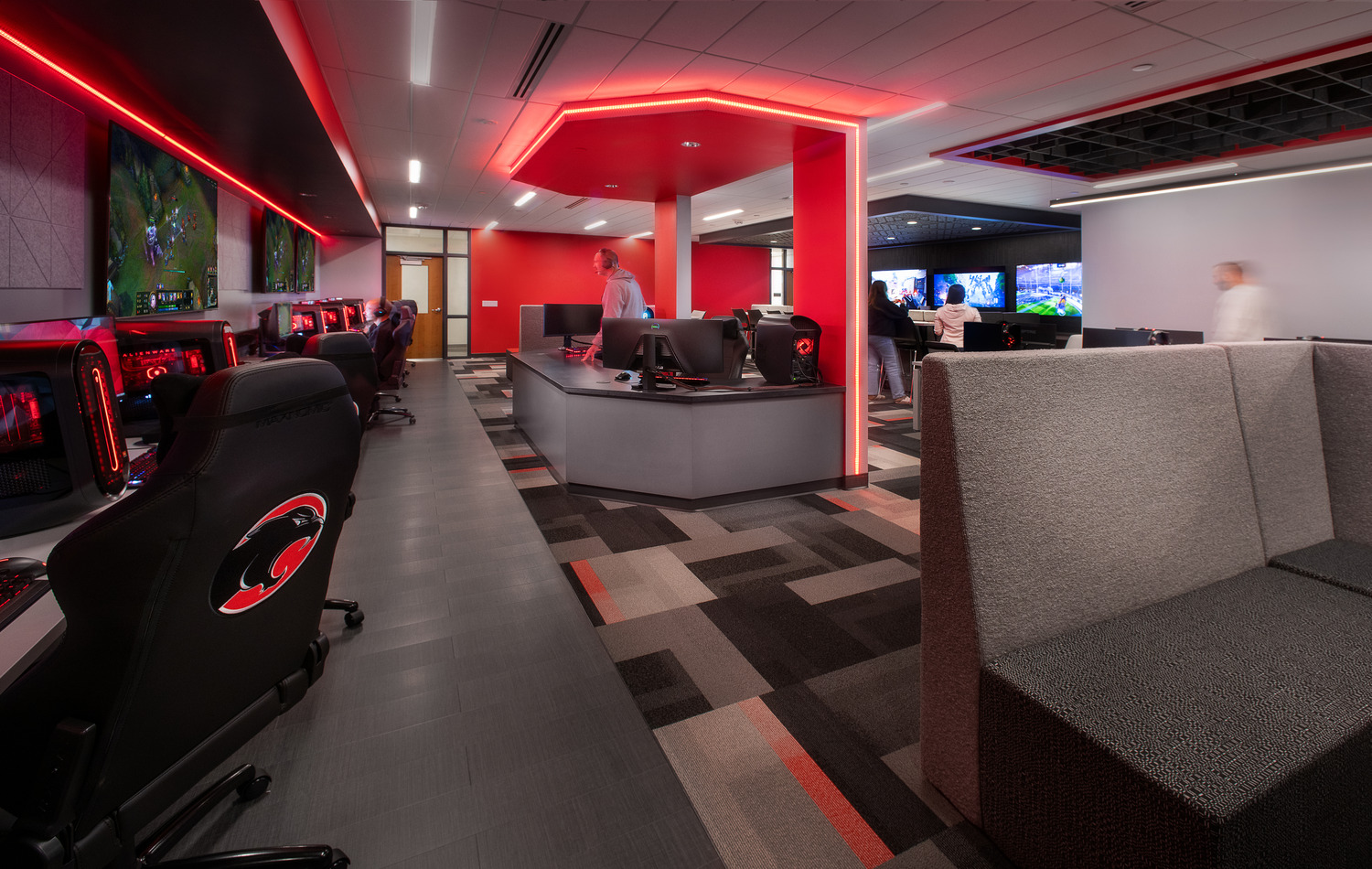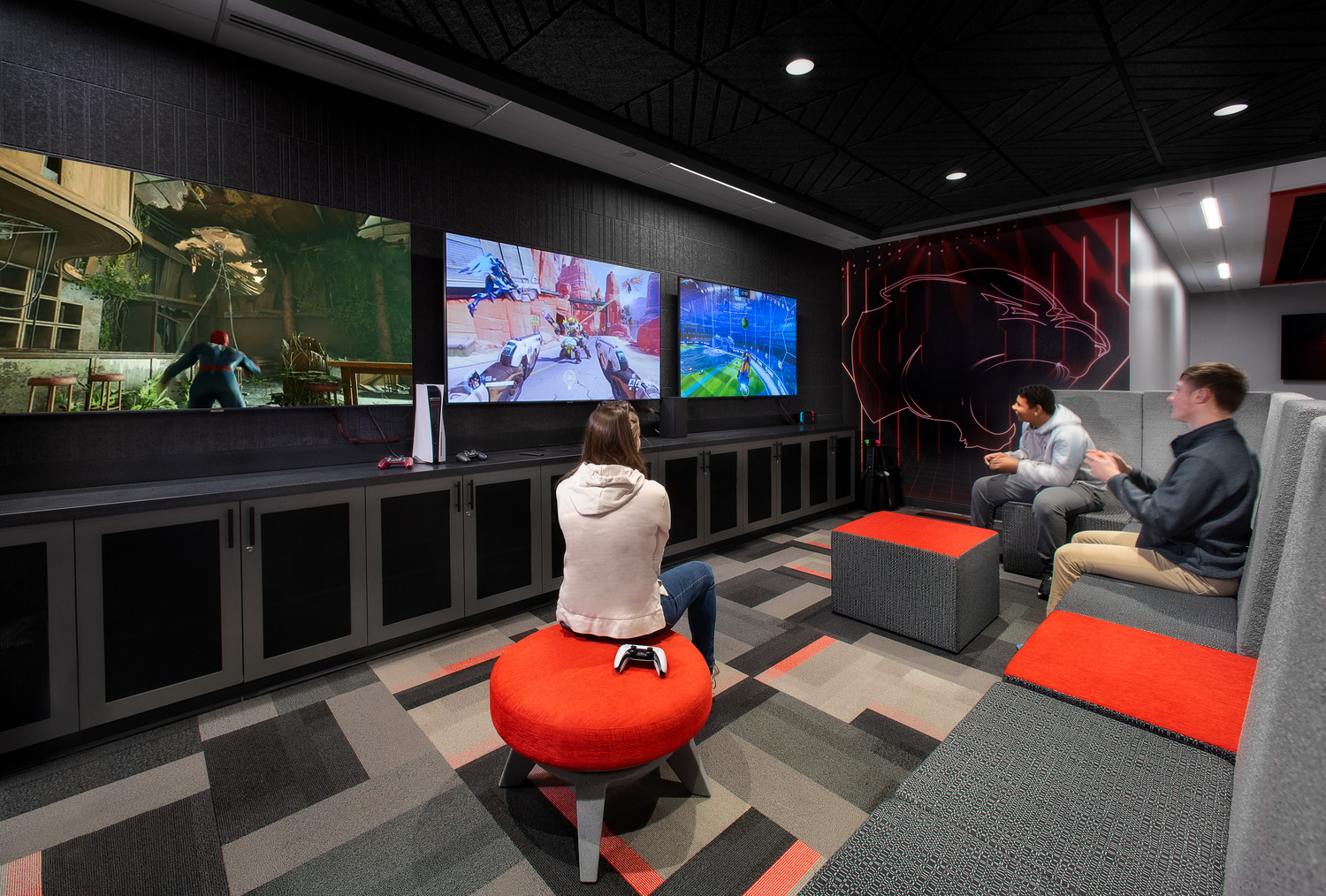Forward-thinking colleges and universities are embracing trending strategies to attract students and better prepare them for the future. One game-changing approach that’s gaining momentum? The incorporation of eSports suites into academic offerings.
Beyond its competitive allure, eSports serves as a catalyst for students to build vital skills demanded by the rapidly growing gaming industry, including team-based gameplay, tactical thinking and digital literacy. Moreover, it can provide a significant boost to enrollment and revenue, which has prompted more than 170 administrations to establish varsity teams and join the National Association of Collegiate eSports (NACE).
Notably, the State University of New York (SUNY) system—the largest comprehensive network of public schools, colleges and universities in the United States—experienced a prominent surge of 2,077 students in an eSports program during the 2021 fall semester. This marked a substantial increase from the 636 students enrolled the year prior, underscoring the growing popularity and enduring presence of this program.
Sare also getting in on the action by offering eSports to align with evolving college environments. For instance, Sewickley Academy, a renowned college preparatory academy in Sewickley, PA, recently transformed an underutilized media room into an eSports suite. Such spaces are often equipped with more high-powered infrastructure than an average classroom, make ideal “homes” for these programs.

Located in the lower level of Sewickley’s event center, this eSports suite not only inspires gaming, but lays the foundation for adding courses in programming, media production and video game development, preparing students for lucrative careers in emerging fields like game design, video game journalism and eSports management.
Creating Holistic Gaming Experiences
Optimal gaming environments prioritize flexibility; in this vein, Sewickley’s eSports suite was designed to be highly adaptable, with designated areas for practice sessions, tournaments and informal club gatherings. The inclusion of modular furniture underscores this versatility, enabling effortless space reconfiguration while maintaining the atmosphere of a typical gaming lounge.
Given the potential adverse health effects of prolonged computer usage, like eye strain, strategic lighting emerges as another critical consideration. All fixtures, including LED accents, should be adjustable to cater to student preferences and maintain a balance between artificial and natural lighting.

Complete control allows for brightness modulation, preventing screen glare and permitting students to turn off LEDs and set ambiance according to current activities, from hangouts to focused events.
From a branding perspective, custom colors, logos and iconography can be weaved into designs to boost competition, identify teams and foster school spirit. For example, the Sewickley mascot—a panther—is prominently featured throughout the institution’s eSports arena, and its signature black and red harmonize within the lighting and carpet patterns to ensure cohesiveness with the rest of the campus.
Implementing a central “coaching” station can further drive unity by allowing faculty supervisors to remotely participate in student games and offer insight to varsity teams, and additional seats flanking this command desk can promote inclusivity and enhance tournament participation for spectators.
To encourage all styles of gameplay, including casual console use, administrators should ideally consider adding a separate, more relaxed zone with comfortable seating, large-screen TVs and ample storage alongside dedicated computer stations.

Sewickley’s laid-back gaming area functions as a space for students interested in console-based games.
Other key considerations for successful eSports adoption include lockers where students can store their personal effects and charging stations with USB ports for seamless technological assimilation and malleability. Mindful design decisions like these can help augment the already-powerful nature of eSports, providing quality-of-life improvements that benefit both students and staff within the dynamic fusion of recreation and learning.
A Progressive Landscape for Learning
By actively shaping education through this virtual arena, colleges and universities can position themselves as progressive administrations that champion career-readiness. This not only primes students for today’s challenges, but instills in them the abilities and mindset essential for success in tomorrow’s digital realm.
“Working in lock-step with our partners, we concentrate on making these suites as adaptable as possible to serve a dual purpose—the primary goal is to empower collegiate-level eSports, but they can easily double as classrooms for a myriad of multimedia-based subjects, like broadcast journalism,” explained CPL Architect Melanie Panutsos, AIA, NCARB, WELL AP, LEED GA, who served as Senior Project Manager.


